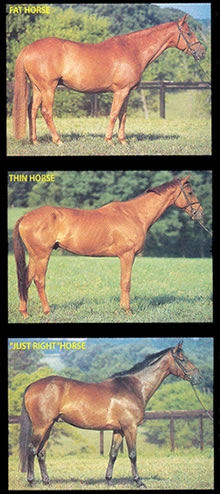What the leg yield is: Walking or trotting, your horse moves forward and sideways by crossing his inside legs in front of his outside legs while he keeps his body straight (except for a slight flexion at the poll and jaw away from the direction he’s going).
Why you need it: This most basic lateral movement…
- gives you the feel of making your horse go from the inside leg to the outside rein;
- develops your ability to coordinate weight, leg, and rein aids;
- teaches your horse to understand and respond to those aids;
- supples, loosens and straightens your horse;
- encourages him to step farther under his center of gravity and carry himself;
- increases his ability to round his back, stay straight in transitions and follow a track on the flat and while jumping;
- lays the groundwork for more advanced lateral movements, such as shoulder-in, haunches-in, turn on the forehand and haunches, and half-pass; and
- is a required dressage movement in First Level Tests Two and Three.
Step One: On The Rail
Photo 1. In the walk here (later I’ll do the same work at the trot), I’ve cut the turn to the long side and approached the rail at a 30-degree angle. Now, so that my horse moves fluently into a leg-yield, the moment his forehand reaches the track, I do three things simultaneously:

- I weight my inside seat bone (the right here) a little more than the left by turning my right hip slightly forward and bringing my outside (left) leg back behind the girth, where I can use it both as a driving aid and to keep his haunches from swinging out.
- I move my inside-right-leg (inset A) behind the girth just this much (less than my left leg on the outside) to begin pushing him sideways (later, in the open, I’ll begin pushing him forward and sideways).
- And to ask him to look right (inset B), I flex my right hand inward just enough that I can see his inside nostril, much as if I wanted him to look around the arc of a 20-meter circle.
Once he begins leg-yielding, I use my inside hand normally (as I’m doing in photos 4 and 5 below) and apply only as much inside-leg pressure as I need to keep him moving steadily and rhythmically down the rail. I control the amount of bend and keep his neck straight with consistent feel on my outside (left) rein. I’ll ask for a few steps of leg-yield, then give him a break by straightening and walking or trotting forward, then ask for more leg-yield on the next long side. When he’s really comfortable with this much angle and I feel the rhythm and balance are good…
Photo 2. …I ask for a little more angle.

Photo 3. This is the maximum angle I’d want; more and we’d risk losing the quality of his rhythm and balance.
Step Two: In The Open
Photo 4. Working now in the trot, this angle–slightly greater than we had on the rail–is about the one you’d want for the First Level tests. To produce it, I use a little more inside (right) leg and (so my horse doesn’t hurry from my leg) a little more outside rein. My focus is on keeping the rhythm and balance; as long as I can feel him stepping forward and sideways evenly, I can ask for this much angle. Here the evenness of the pairs of legs tells me the rhythm is good: His right front and left hind are stepping leftward and…
Photo 5. …now the other pair follows. The important thing to remember is that your horse must go easily forward and sideways, so that you feel you’re swinging along with him. Apply just enough leg and hand to get this result; when he responds, lighten your aids until you need to add them again. (The moment you press him sideways beyond his ability to keep his rhythm and balance, you’ll feel him push you onto your outside seat bone, fall through your outside leg and rein and get strong in your hand. Go straight ahead to regroup; then try again with less angle.)
Volker Brommann passed his Bereiter exams in Germany in 1980 under the tutelage of German professional champion Walter Christensen. He came to the U.S. in the early 1980s, continuing to return to Germany regularly to ride with Walter and, after Walter’s death, with Klaus Balkenhol. Tannenluck Dressage, his training and sales business, is based out of Reno, Nev.
Excerpted from “Here’s How: The Leg-Yield,” which first appeared in the September 1995 issue of Practical Horseman magazine.










